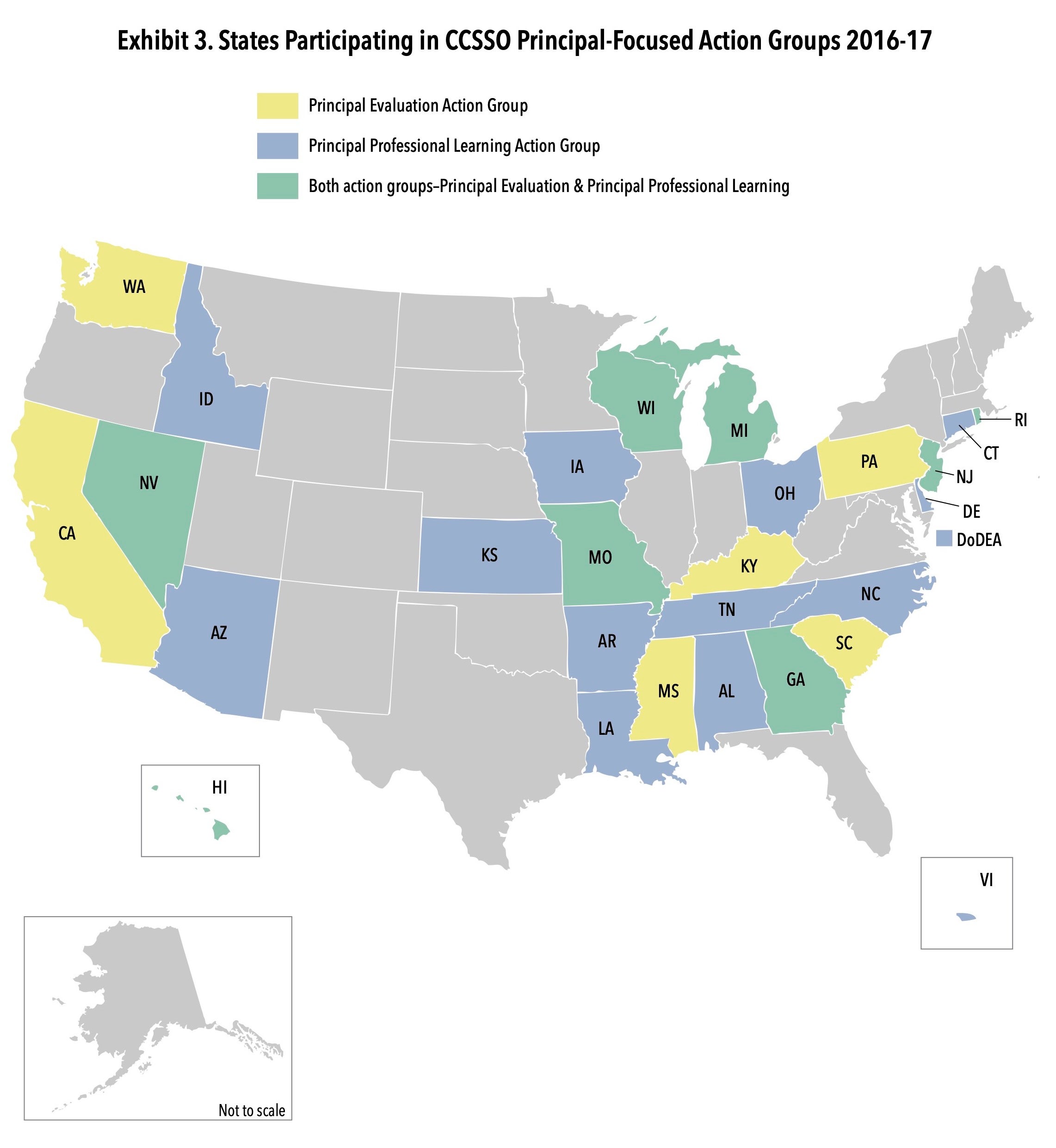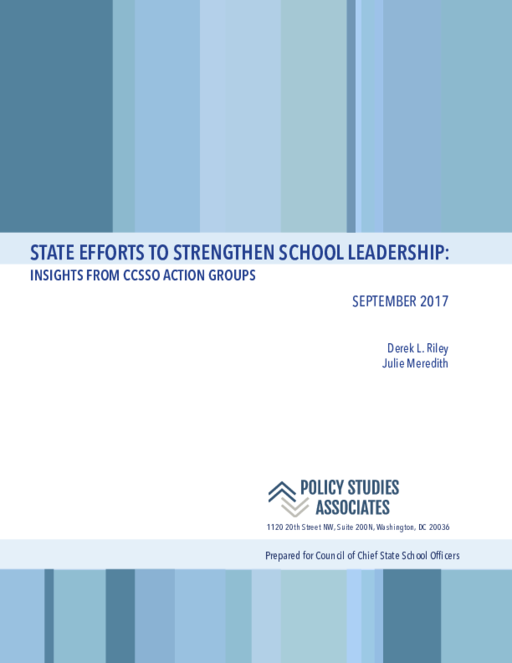Breadcrumb
- Wallace
- Reports
- State Efforts To Strengthen Scho...
State Efforts to Strengthen School Leadership
Insights from CCSSO Action Groups

Summary
How we did this
States shared the information and ideas presented in this report through (1) telephone interviews with 33 participants in 25 states and (2) a survey with responses from 55 participants in 25 states (70% response rate). Representatives from each participating state were given an opportunity to review and vet information shared about their state.
Many states are working to improve school leadership. This brief summarizes the priorities and past efforts of a substantial group of those states.
The Council of Chief State School Officers, with funding from The Wallace Foundation, supported 28 states in developing action plans to promote principal effectiveness. Teams from education agencies met during the 2016-2017 school year to discuss challenges and strategies. They worked on improving recruitment, preparation, support, and supervision of school leaders.
Participating states were surveyed about their work to improve school leadership. Their responses are not representative of the nation. But they do reveal trends in approaches and needs.
- Developing principals is a top priority. More than two-thirds of states identified professional development, mentoring, and coaching for principals as a current or emerging priority.
- States are facing challenges to improving professional development and support for principals. These challenges include bringing existing programs to scale and evaluating outcomes.
- States want to integrate principal support and evaluation with federally-mandated school improvement plans for low performing schools. Few (27%) thought they had made progress to date.
- Improving principal supervisor practice is a new priority. Most (75%) said they intended to improve the ability of principal supervisors to develop principals. Very few (6%) had made past progress in this area.
- States are interested in their role in principal preparation. Many states are or expect to be deeply engaged in developing programs or resources for principal preparation (69%). These programs are often aimed at preparing assistant principals for the principalship.
- Principal evaluation and standards are in place and are not the highest priorities for future work. This was one area where most states reported past progress.
- Some states are shifting the focus of their principal evaluation system from accountability to growth. A substantial number (54%) reported that it was a priority to promote the use of principal evaluation data for principal development.
- The Every Student Succeeds Act provides opportunities for funding school leadership work. Many states (60%) were exploring the use of Title II, Part A set-aside funds for principal development.
- States are challenged by variation in district context, size, and needs. Most states (61%) named differences in districts across the state as one of their top three challenges. The challenge of supporting isolated rural districts was often mentioned. Also, principals in small districts often have few mentors or peers to learn from.
Survey respondents gave high marks to the Council of Chief State School Officers action groups. Nearly all (90%) found it useful to get new ideas from other states on moving school leadership policy and practice forward. They also valued new ideas from experts. They found that in-person meetings provided uninterrupted time to focus on principal-related work.
The report provides one-page snapshots of the school leadership work underway in most of the states involved in the effort.
Key Takeaways
- The Council of Chief State School Officers supported 28 states in developing action plans to promote principal effectiveness during the 2016-17 school year. Participants were surveyed about their current priorities and past efforts. The survey is not nationally representative but does point to emerging trends.
- States view developing principals as top priority but name challenges. More than two-thirds of states identified professional development, mentoring, and coaching for principals as a current or emerging priority. One major challenge is supporting isolated rural districts.
- Improving principal supervisor practice is a new priority. Most (75%) said they intended to improve the ability of principal supervisors to develop principals. Very few (6%) had made past progress in this area.
- Some states are shifting the focus of their principal evaluation system from accountability to growth. A substantial number (54%) reported that it was a priority to promote the use of principal evaluation data for principal development.
- The Every Student Succeeds Act provides opportunities for funding school leadership work. Many states (60%) were exploring the use of Title II, Part A set-aside funds for principal development.
Visualizations


